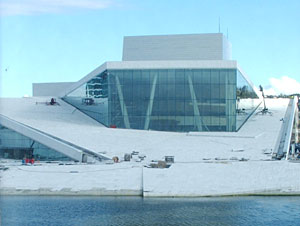Following the resignation of architect Patricia Lancaster as New York City’s Department of Buildings commissioner, Mayor Michael Bloomberg is mulling whether or not to drop the requirement that the commissioner be a registered architect or engineer, The New York Times reported on April 23. Lancaster stepped down this week in the wake of several recent construction accidents, including a deadly crane collapse in March at a high-rise whose construction Lancaster later admitted should never have been approved. Until this string of disasters, which has left 13 people dead this year (already more than all of 2007), Lancaster had been viewed as a reformer who succeeded in curbing corruption and in overhauling New York’s building code for the first time in three decades—all during the midst of an unprecedented construction boom since 2001. But critics argue that Lancaster had failed to emphasize safety and that her explanations for the department’s missteps were unclear. Her supporters counter that she achieved “almost unimaginable” results given that the Bloomberg administration operated the Buildings Department “on a shoestring,” as Ric Bell, executive director of the American Institute of Architects in New York, told the Times. Following Lancaster’s resignation, the paper reported on April 24, “the Bloomberg administration announced a $4 million plan... to hire specialized engineers to inspect ‘high risk’ construction sites citywide and develop new procedures to make the work safer.”
![]()
Listen to a podcast of these headlines and more.
Click the play button to begin | Click here to download

Photo © James Murdock
Snøhetta’s Oslo Opera House, as seen when it was still under construction in September 2007. The building opened this month.
Construction could begin as early as this summer on Paolo Soleri’s Arizona Canal bridge in Scottsdale, Arizona, following a hearing this week at which the city council voted to provide the remaining funds necessary for the project. Soleri, the Italian visionary behind Arcosanti, has been working on the design for 10 years, the East Valley Tribune reported on April 23, but the project’s backers still needed to raise $1.7 million toward the $3.2 million construction budget. The 100-foot-long span will cross the canal near Camelback and Scottsdale roads. Ranging between 15 and 20 wide, the Tribune wrote, it will be “anchored by two 64-foot pylons that will create a ‘light dagger’ as the sun moves across the sky marking the equinox, the solstice and the cross-quarter dates. The shaded plaza on the south side of the canal will include a reflecting pool, Soleri-designed bells hung from 22-foot pylons over a circular shallow moving stream of water, gathering areas, benches, and a hitching post.” Although the council’s vote paved the way for construction, funds will not be made available until the municipal budget is approved in June. The city’s treasurer had originally excluded money for the bridge citing “lean economic times,” The Arizona Republic reported on April 23, but a show of support for Soleri’s design swayed the council to reinstate it. The 88-year-old architect said that the councilors will not regret their decision: “I think this bridge can be a moneymaker,” he told the Tribune, referring to the tourists his bridge will attract to Scottsdale once it’s finished.
Architecture critics continue to rave about Snøhetta’s new Oslo Opera House, which opened earlier this month in Norway. The building’s most dominant feature is its Carrara marble roof that rises on a sharp incline from the waters of Oslofjord up to the main auditorium’s fly tower. Members of the public may walk on this surface, portions of which are heated during the wintertime for safety. Although the building resembles an iceberg or a ski slope, befitting the Scandinavian landscape, lead designer Kjetil Thorsen told RECORD last fall that no such symbolism was intended: “The space touches the water and the sky, but it’s its own thing.” One thing is certain, the Opera House has members of the public—more than 15,000 of whom turned out last fall to explore the roof once it was completed—as well as critics enchanted. They are equally smitten by the acoustics of the main hall, whose richly appointed walls are covered in Armagnac-stained oak panels. “Even if opera is not your thing, and you have little interest in the finer points of auditorium acoustics, this is an unmissable building, and immense fun to engage with,” Jonathan Glancey wrote on April 21 in the UK’s Guardian newspaper. And Richard Morrison, of the UK’s Independent, gushed that he was “in love.” Headlined “Why Can’t We Do It Like the Norwegians?” Morrison’s April 15th article added that the oil-rich Norwegian government picked up the entire $700 million tab for the project, whose design the public was invited to critique several times following its selection in 1999—a marked contrast to the way things get built in Britain (and, many observers would add, the United States). Morrison wrote: “Is the British track record of delivering prestigious projects on time and budget so chequered that British people have lost all appetite for building them? That’s something for you to ponder. Me? I’m too busy checking out budget flights back to Oslo.”

Post a comment to this article
Report Abusive Comment